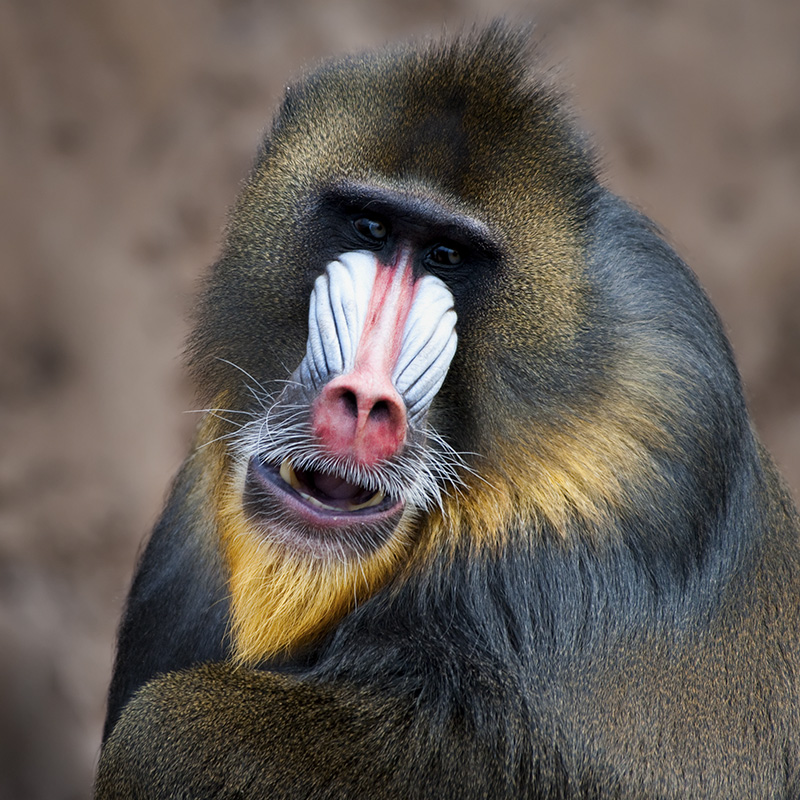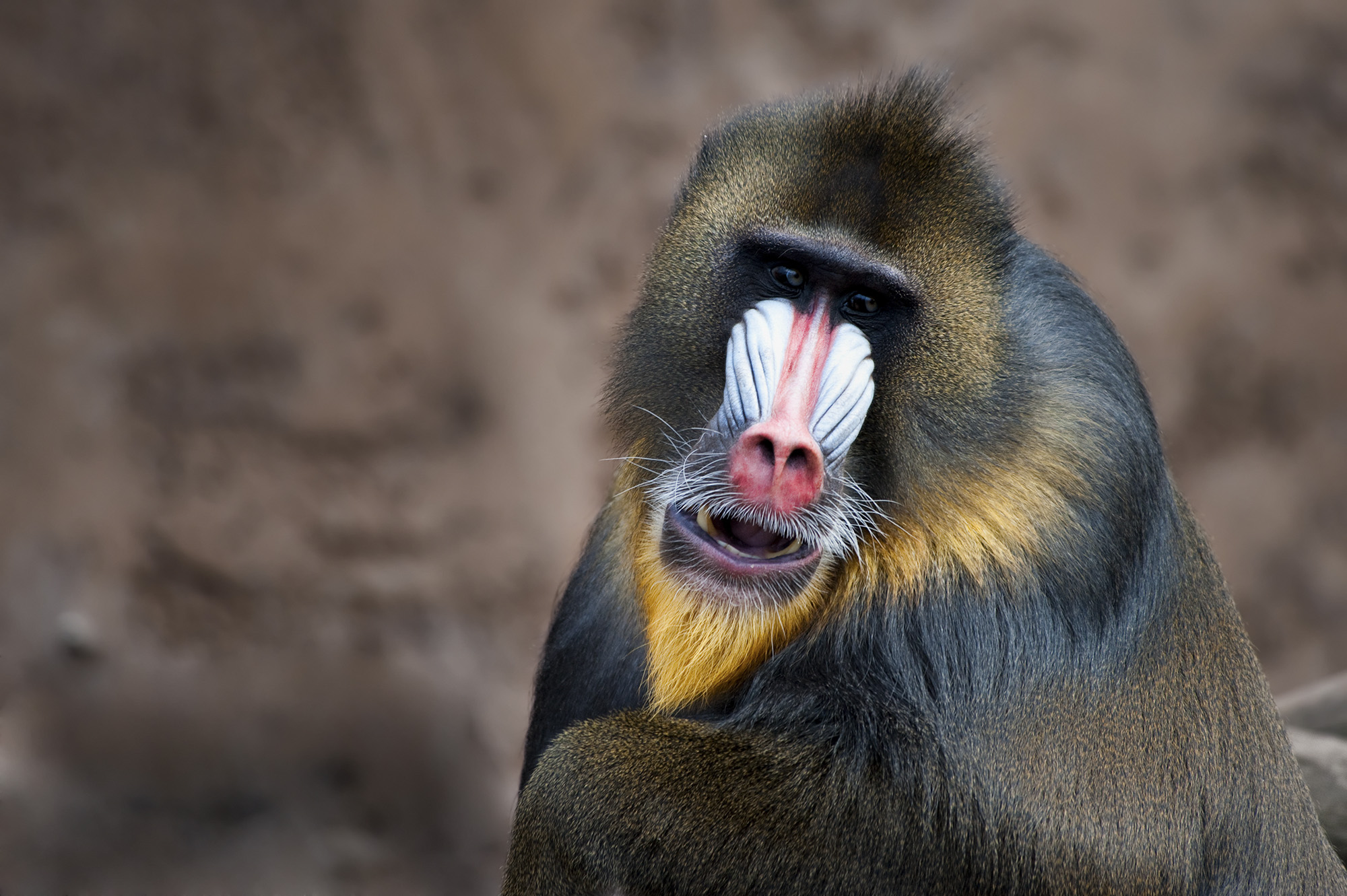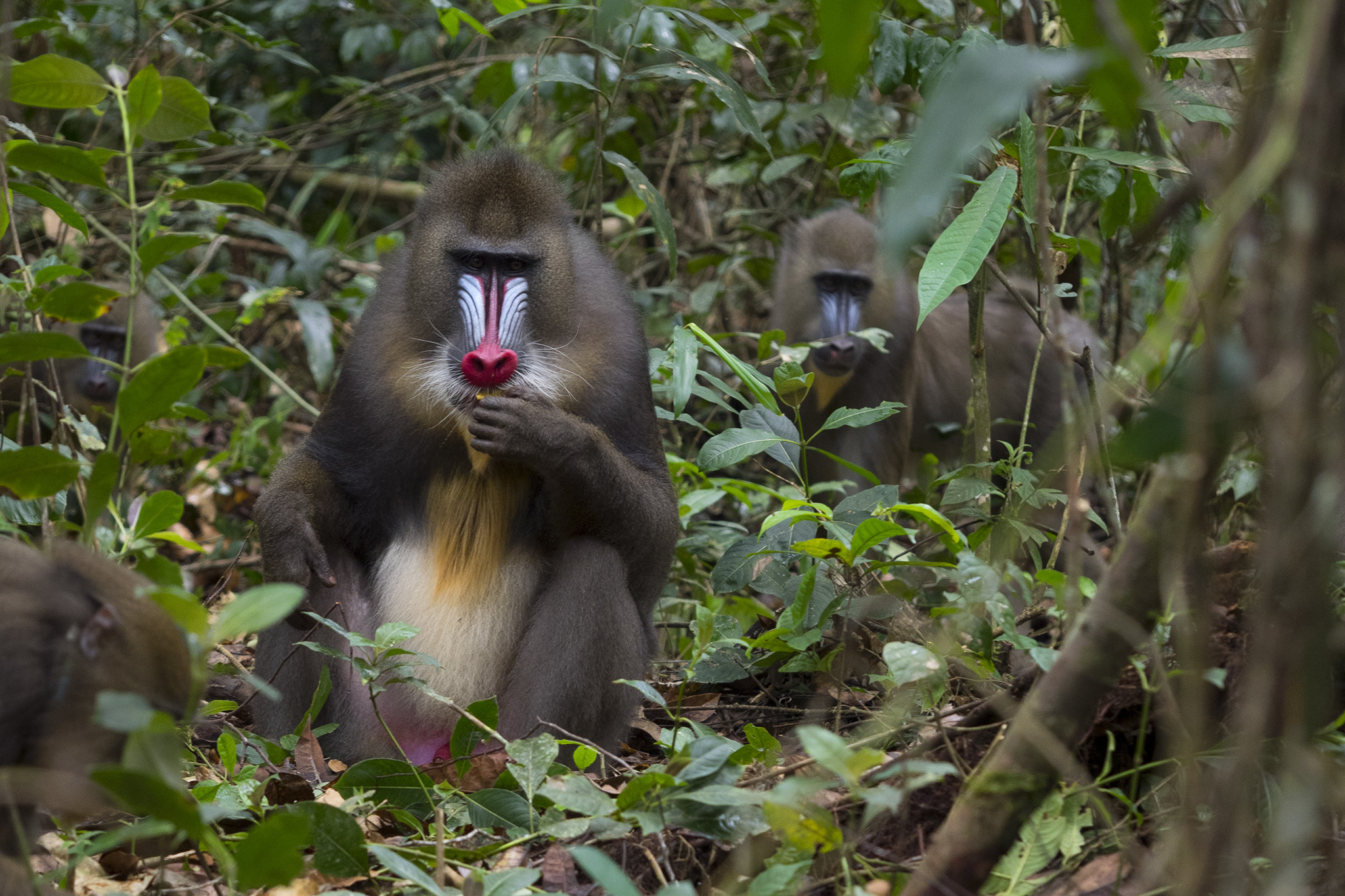Mandrill
(Mandrillus sphinx)

Congolian Coastal Forests
STATISTICS
Height up to
65 cm
Weight up to
37 kgs
Lifespan
20 years
Tool Use - Strength - Jumping Ability - Intimidation Techniques
Although it closely resembles a baboon, the Mandrill is a separate primate that is most commonly found in tropical rainforests. Compared to the largest baboons, the Mandrill is more ape-like in build. It is predominately terrestrial but more arboreal than a baboon, feeding high in the forest canopy. It sleeps in a different tree site each evening and moves from branch to branch by lateral jumps.
It is the world’s heaviest monkey and lives in large groups called hordes eating an omnivorous diet comprised mostly of fruits and insects. As such it is an important seed disperser for many tree species. Its cheeks have large pouches to store food for later consumption.
An exceptionally colorful mammal, the Mandrill derives these pigments from light refraction in facial collagen fibers. The Mandrill is olive green or dark grey in colour with a white stomach and a distinctive red stripe down its muzzle. Coloration is more pronounced in dominant, adult males who have red nostrils and lips, a yellow beard, white tufts and a multi-colored backside.
Alpha males signal it is time to move location by emitting a two-phase grunt. Breeding occurs every two years and gestation takes 1,775 days. The Mandrills main predator is the Leopard.
BIODIVERSITY BENEFIT
Seed Disperser
THREATS
Deforestation
Destruction of evergreen forests reduces the capacity of the environment to support Mandrill populations.
Hunting
Hunted for bushmeat, which is highly prized in Gabon.
PROTECT THE WILDARK 100




